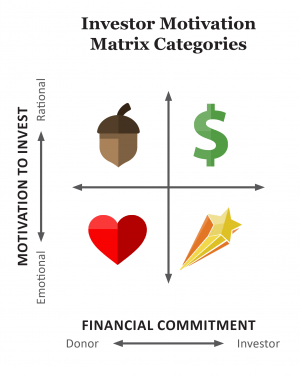Can one day impact your nonprofit’s drive for sustainability?
A lot is being said right now about Giving Tuesday.
I don’t disagree with the strategy behind this much-publicized day of giving and think it’s a very useful tool in the fundraising toolkit for many smaller nonprofits. Make a game plan, get small donations, and they will add up to a decent line item in your revenue budget. Just take it for what it’s worth … primarily a low-dollar, transactional effort to help build your brand more than anything else.
Relying on one day a year (or one big event or even one big donor) as the core of your fundraising strategy will almost certainly leave money on the table.
Cultivating relationships with major donors (or investors as we prefer to call them) takes time and skill. It isn’t a quick fix for your revenue stream. But it is a long-term solution that leads to financial sustainability and can make your mission happen for years to come. It takes more than a day to turn donors into investors and effectively communicate the outcomes of your organization. But the results are worth it.
Take a look at our Investor Motivation Matrix, first presented in the book Asking Rights, for clues on how to strategically elevate your donors:
Tugging on the heartstrings
This quadrant is exactly what Giving Tuesday relies on for its success. These are activities and programs that depend on lots of smaller donations. The opportunity for nonprofits whose programs are primarily funded by these types of events is to develop a more rational appeal for longer-term support.
An acorn effort with potential
The low financial involvement, high rational appeal encompasses activities that depend on smaller amounts of dollars but where a rational appeal is effective. An example would be a membership drive for the operation of a local Chamber of Commerce. Membership carries with it certain privileges and benefits but requires an insignificant financial outlay. Strategies that actively move donors toward larger investments would benefit this group.
Wishing on a shooting star
These efforts are the superstars that grab all of the headlines and raise lots of money. They are highly visible and the need is considered obvious or extremely necessary, such as a one-time campaign for a hospital emergency room that needs refurbishing and updating, made obvious by a tragedy in which lives were lost due to lack of modern equipment. In this case, a few high profile programs may generate lots of funding but rely solely on an emotional appeal. A shooting star fundraising effort often burns brightly but then burns out.
The fundraising blue chip
These are activities and programs that require larger amounts of funding and evidence of effectiveness, results, or valuable outcomes will be required to secure that funding. A capital campaign for a new program that will create jobs, increase capital investment, and produce positive, long-term ripple effects in the community is the perfect example of this.
Moving donors to investors with a more requisite rational appeal is the key to sustainable fundraising success. The “every little bit helps” mentality of Giving Tuesday won’t build a building or create sustainability for your organization, but it can be a useful tool especially for brand awareness for your nonprofit organization. It is somewhat similar to the person who only plays the lottery when the pot gets big. He or she is entering the contest at precisely the time when everyone else is doing the same thing!
So don’t forget to dig deeper into your fundraising toolkit and look at cultivating investors instead of donors for a more strategic, long-term approach to meet your funding goals in 2020 and beyond.







